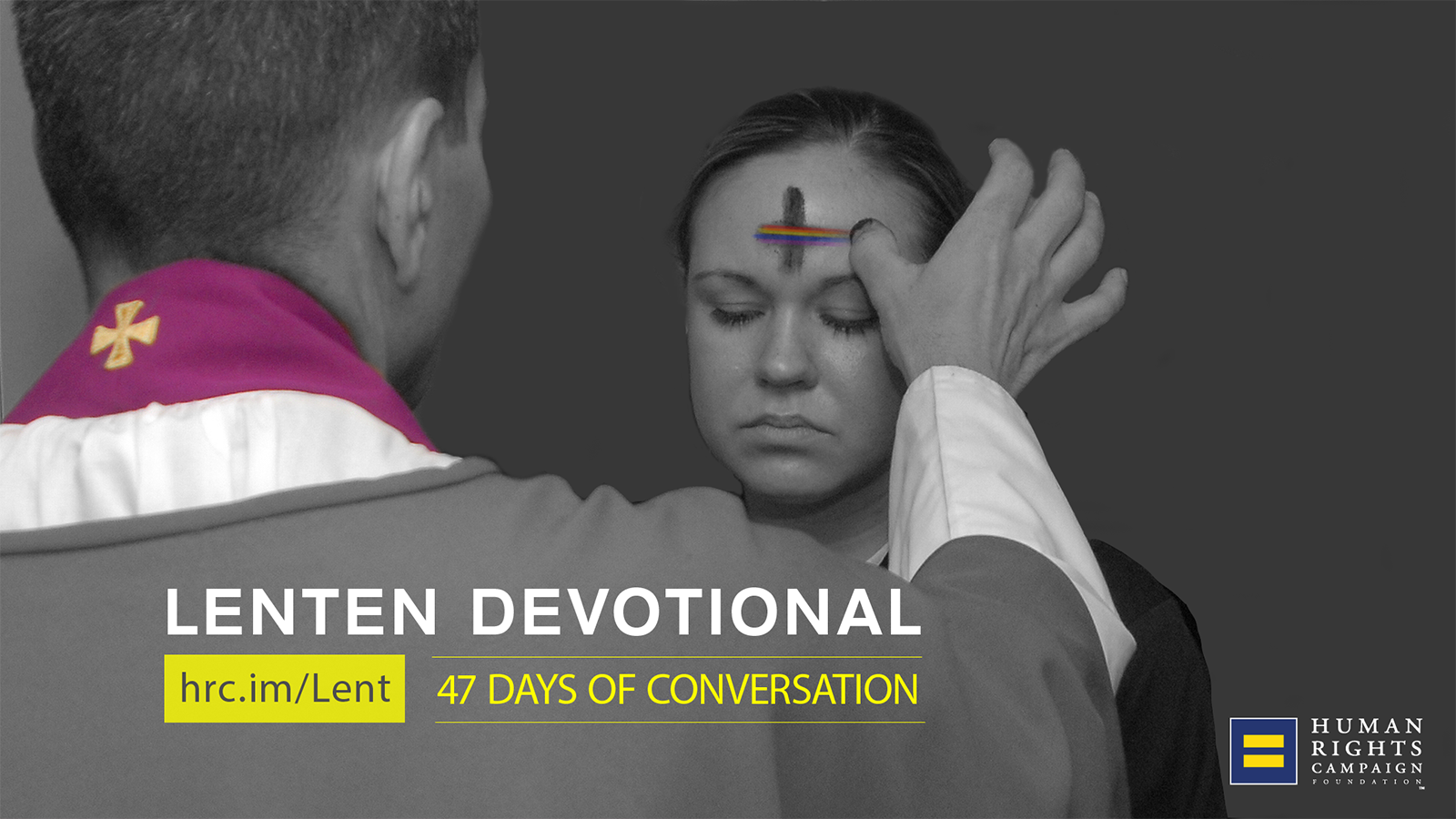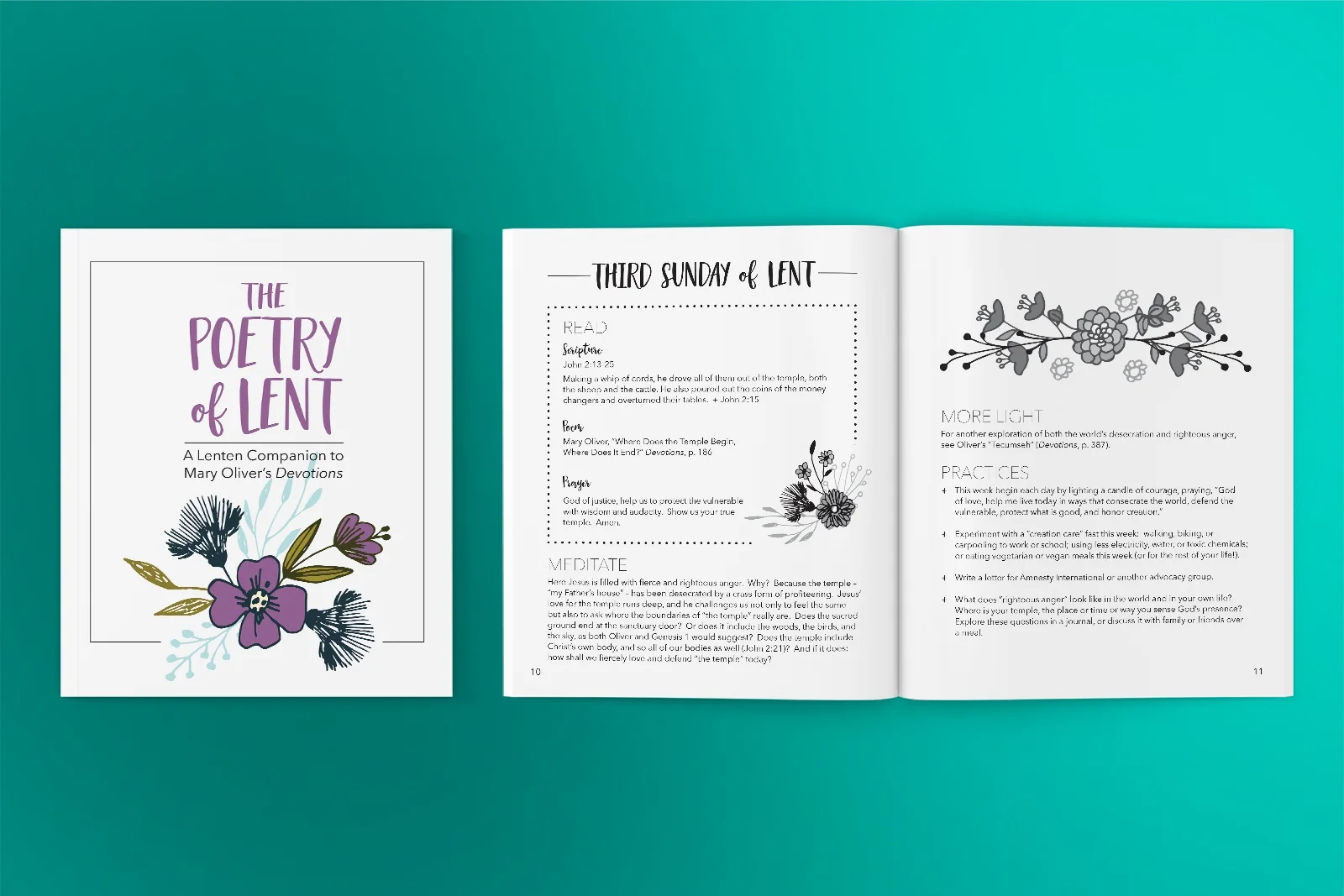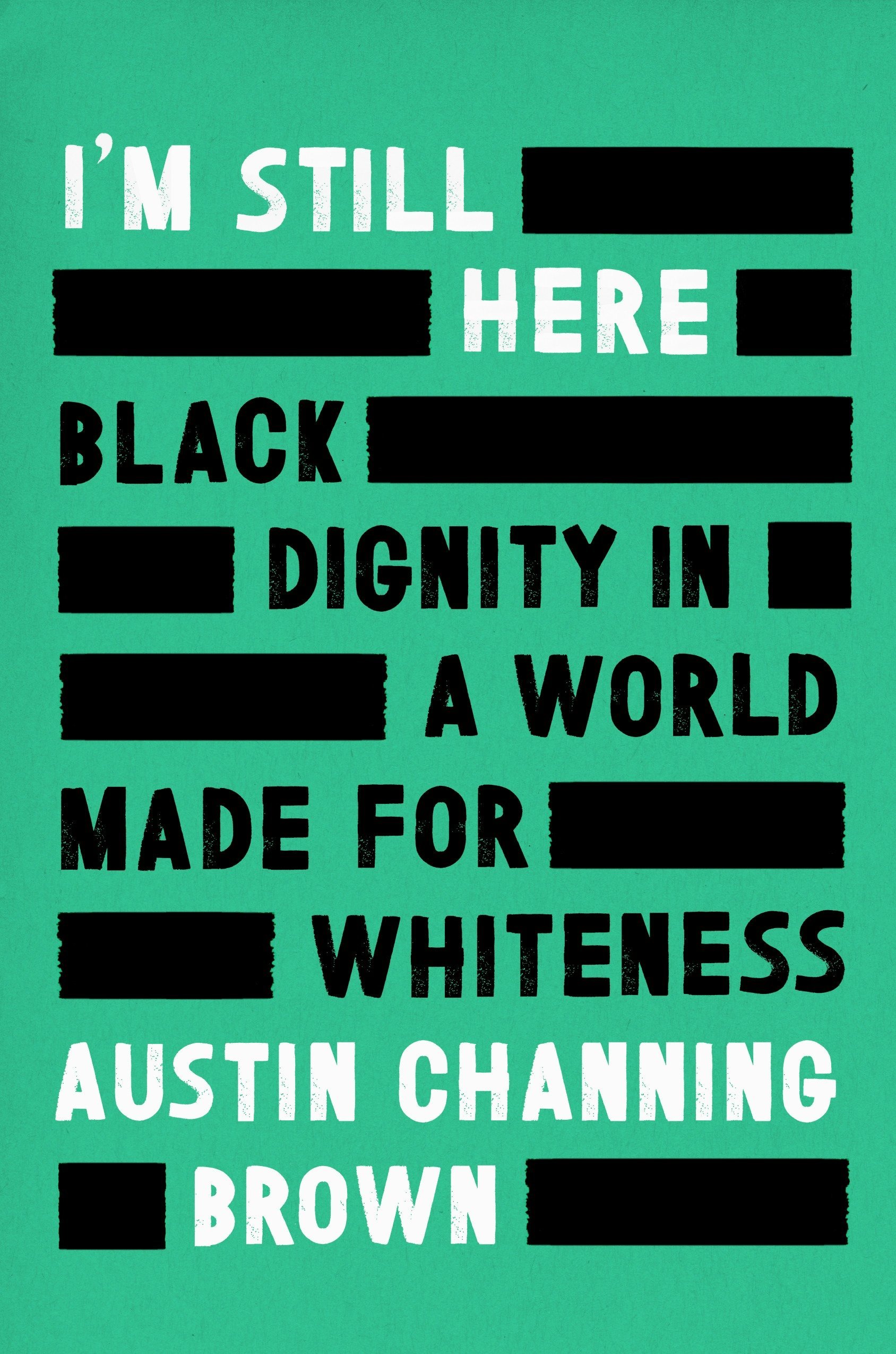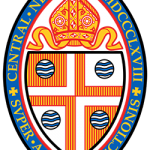What intentional steps will you take this Lent to draw closer to God in love? We asked you, and you told us! Folks from all over the Diocese of Central New York wrote in to share some of your favorite Lenten resources for individuals and congregations.
We’d love to hear from you, too! How will you be praying, listening to others, building relationships, speaking with integrity, and sharing your life of faith in the upcoming Lenten season? Please tell us in the comments so we can all learn together.
Join the Journey: Lent 2020 Calendar from Forward Movement

“I love these calendar posters! I’m a single, busy mom of a tween and if it weren’t for praying LITERALLY on-the-run in every aspect of my work, church, and home life, I wouldn’t be praying. I like these posters because they are also cartoon-ish which makes it interesting to my tween son. I try to make a point to have him or I read aloud each day (beginning or end of the day) to give us something to ponder, think, discuss, and/or pray about. I have bought the package of 25 and give them out at church.”
—Paige Taylor, warden of St. James’ Episcopal Church in Pulaski, NY
Human Rights Campaign Lenten Devotional affirming LGBTQ+ people of faith

“During Lent, I typically lean into the Prayer Book tradition even more heavily than I do the rest of the year, but I also like to add links between my prayer life and the world I serve in. This practice has taken all sorts of forms, but this year I’m paying attention to a project organized by a friend of mine in Arkansas. Denise Donnell, the State Director at the Human Rights Campaign, is organizing daily meditations for the Season of Lent that affirm LGBTQ+ people of faith. Full disclosure, I’ve been asked to be a contributor this year, and I’m honored to collaborate with the HRC in my home state. I’ll pray. I’ll listen. I’ll speak where our story shines, and I hope to share the good news of a world healed by—or, at the very least, well on its way to being healed by—God’s love.”
—The Rev. Brooks Cato, rector of St. Thomas’ Episcopal Church in Hamilton, NY
A Way Other Than Our Own: Devotions for Lent by Walter Brueggemann

“This is a personal devotion that I do during Lent. Just a few pages (two or three) a day, starting with scripture, a reflection and a prayer. I incorporate it into my rule, following Morning Prayer, the last prayer before I start my day. Brueggeman’s words are poetry and I find it a great way to ground myself during Lent, before I go out into the world every day. The title kind of says it all: A Way Other than Our Own.”
—The Rev. John Rohde, priest at Christ Episcopal Church in Jordan, NY
A Time to Weep Lent 2020 pamphlet by Joan Chittister

“I am a big fan of Sister Joan Chittister and often read her Lenten devotionals. This year her pamphlet is titled A Time to Weep and includes artwork by a very talented street artist, LMNOPI. Lent is a time set aside “to look again at who we are, at where we’re going in life, at how we’re getting to where we say we want to go,” according to Joan Chittister. And in the 2020 Lenten pamphlet, A Time to Weep, she urges us to “set our faces like flint” and let nothing deter the Jesus life in us.”
—Karen Anderson, leader of the diocesan Visioning Team and vestry member at St. James’ Episcopal Church in Clinton
The Poetry of Lent: A Lenten Companion to Mary Oliver’s “Devotions” from the Salt Project

“I will be using a booklet: The Poetry of Lent: a Lenten Companion to Mary Oliver’s Devotions. It is used with the book Mary Oliver’s Devotions or the website indicates that the poems can be found online. The scripture references are NRSV [New Revised Standard Version of the Bible] from the RCL [Revised Common Lectionary] Year B, but suitable for any Lenten season. The resource can be found here>”
—Daniel Crocker, member of Christ Episcopal Church in Binghamton
Repentance of the sins of racism and antisemitism

“A few years ago, Rev. Becky Coerper at St. James’, Skaneateles suggested a number of Lenten practices that we as a congregation might embrace during the season of Lent. She included in her list of possible practices: Learning about the history of the indigenous people in this area. That year, my family visited the Skä·noñh Center in Liverpool and attended a community event there, in an attempt to learn something about the Haudenosaunee people, about whom I knew almost nothing. This experience has stayed with me ever since and has come to shape my understanding and practice of Lent, particularly the importance of making amends in Lent for individual and collective sins.
To that end, what I plan to do this Lent is to continue to listen and learn about the ways that I, as an American Christian, have aided and abetted evil in our world, and to consider how I might concretely act to adopt restorative practices. For me, my complicity in the sins of racism and anti-semitism are weighing on my heart. In order to place myself in a position to learn, I’m currently reading How to Fight Anti-Semitism by Bari Weiss and am planning to read Austin Channing Brown’s I’m Still Here. After reading and listening to these voices, I hope to consider what actions I can take in order to do my part to begin to make amends. For example, I’ve been meaning to give financially to the Equal Justice Initiative for years, an organization which works to address mass incarceration and racial inequality in the justice system. Perhaps it’s time for me to “get around” to taking action.”
—Erica Olson-Bang, Ph.D., ministry intern at St. Thomas’ Episcopal Church in Hamilton
Re-examining our relationship with God’s creation
 “We’ll be focusing on Creation Care at Lent this year and plan to use some of the resources here from Earth Ministry>”
“We’ll be focusing on Creation Care at Lent this year and plan to use some of the resources here from Earth Ministry>”
—The Rev. Jon White, rector of St. Luke’s Episcopal Church in Camillus
Bread and Wine: Readings for Lent and Easter
 “This could be used for a discussion group, but our household is using it as an evening reflection for the time of Lent through Holy Week. Aptly entitled Bread and Wine: Readings for Lent and Easter, the selections are short, could be read separately or shared aloud. There are a battalion of amazing writers of Christian literature in this volume,many well known, and the writings come from a vast time span. Each entry is a prayer within itself, and as we read to one another and listen to one another we explore the opportunities of Lent for self-examination and spiritual renewal.”
“This could be used for a discussion group, but our household is using it as an evening reflection for the time of Lent through Holy Week. Aptly entitled Bread and Wine: Readings for Lent and Easter, the selections are short, could be read separately or shared aloud. There are a battalion of amazing writers of Christian literature in this volume,many well known, and the writings come from a vast time span. Each entry is a prayer within itself, and as we read to one another and listen to one another we explore the opportunities of Lent for self-examination and spiritual renewal.”
—The Rev. Shelly Banner, deacon serving St. Matthew’s Episcopal Church in Liverpool
Virtual Lent and Holy Week Retreat with the Rev. Bill Redfield
 “I will be taking a Virtual Lent and Holy Week Retreat that will begin on Ash Wednesday, February 26 and run through Easter Sunday, April 12. This retreat is offered by The Rev. William Redfield, a priest of our diocese who most recently served as rector of Trinity Church in Fayetteville. You can get details about the retreat in this invitation or on Bill’s website, williamredfield.com>
“I will be taking a Virtual Lent and Holy Week Retreat that will begin on Ash Wednesday, February 26 and run through Easter Sunday, April 12. This retreat is offered by The Rev. William Redfield, a priest of our diocese who most recently served as rector of Trinity Church in Fayetteville. You can get details about the retreat in this invitation or on Bill’s website, williamredfield.com>
I took Bill’s virtual Holy Week last year and found it to be a way to strengthen my relationship with God, so much that I then I participated in his online Advent retreat in December. Now I look forward to the Virtual Lent and Holy Week Retreat building upon the journey I’ve started.
Based on Bill’s two previous virtual retreats, I’d expect this Lent and Holy Week Retreat to include praying, listening to recorded readings and reflections, music and movement, and Zoom meetings to connect with other participants to share your journey.”
—Cathy Hobart, diocesan controller
Sadhana, a Way to God: Christian Exercises in Eastern Form
 “My Lenten devotional this year is rereading the book Sadhana, a Way to God: Christian Exercises in Eastern Form by Anthony de Mello. This book engages the reader in the practice of meditation as a meaningful expression of Christian prayer. Mediation has a long history in Christianity, which is often overlooked outside of the Christian monastic setting.
“My Lenten devotional this year is rereading the book Sadhana, a Way to God: Christian Exercises in Eastern Form by Anthony de Mello. This book engages the reader in the practice of meditation as a meaningful expression of Christian prayer. Mediation has a long history in Christianity, which is often overlooked outside of the Christian monastic setting.
Sadhana is filled with exercises allowing the reader to meditate and experience the presence of God without complicating when words aren’t necessary.
Most devotional prayer often leans heavily on words, almost like we are sending a letter or an email to God. Christian meditation outlined in Sadhana really encourages just dwelling in and communing with God the Father in silence, opening your heart to Him and allowing yourself to “just be” in His presence.
There’s an effortlessness and connectivity that a person can experience by this method that, I personally, haven’t through traditional devotional prayer. Like spending time with a parent, friend, or partner— no words need to be said, there’s a gift of togetherness rooted in the silence.
I can imagine Jesus using meditative prayer like this when He spent 40 days in the wilderness. God already knows what’s on our hearts in this Lenten season, so we don’t always have to plead our case, we just have to open ourselves to God’s solutions. This Lenten season I’m hoping to draw closer to God, listen more, and dwell with God in His silence and peace through meditation.”
—John Gillmeister, member of St. Stephen’s Episcopal Church in New Hartford
How will you observe Lent in 2020?
Explore even more resources for Lent at episcopalchurch.org. But before you go, drop a comment and tell us about your favorite Lenten resource or your plans for Lent 2020!



Thank you for asking the question and gathering the varied answers